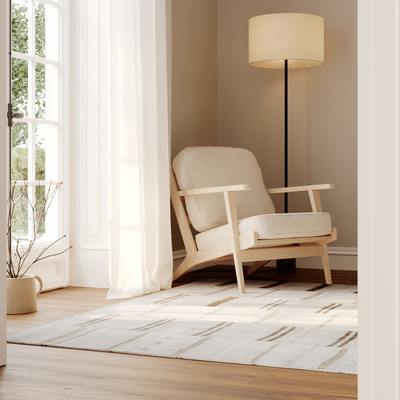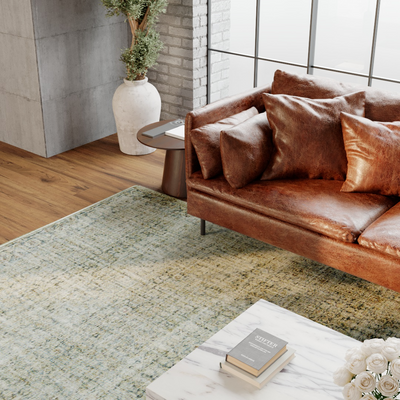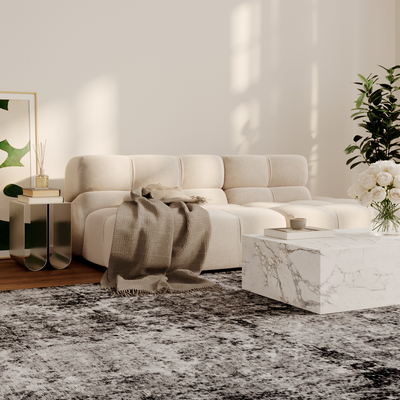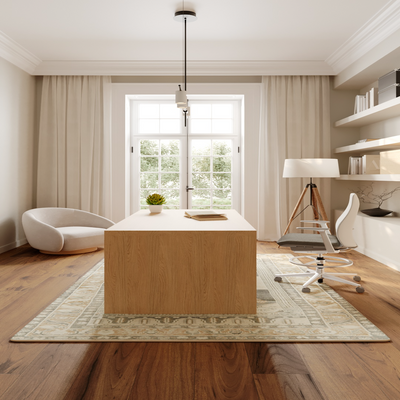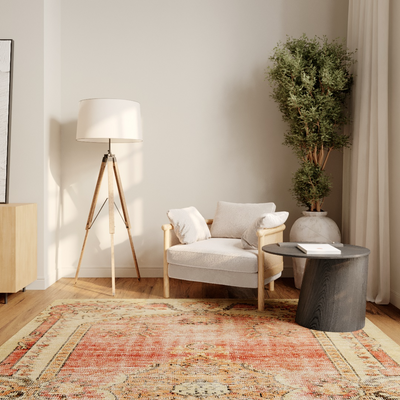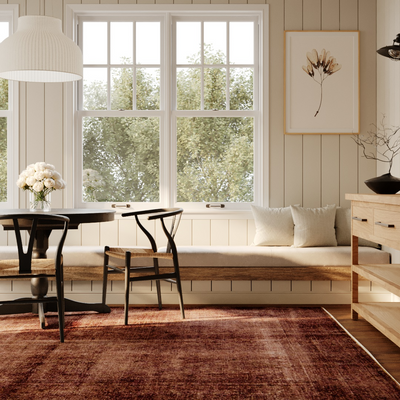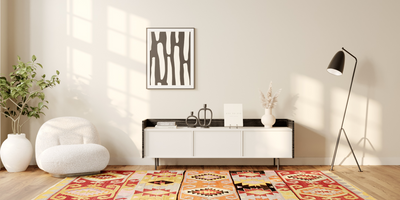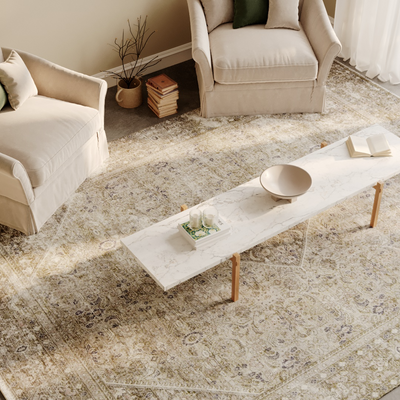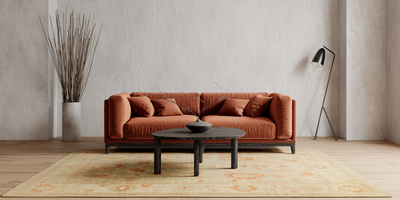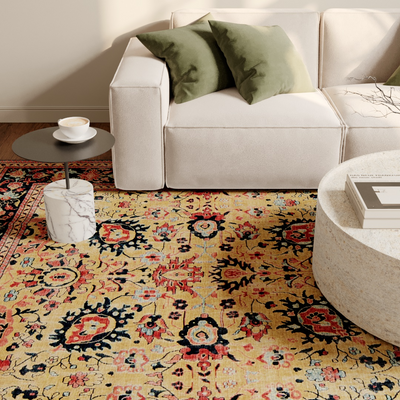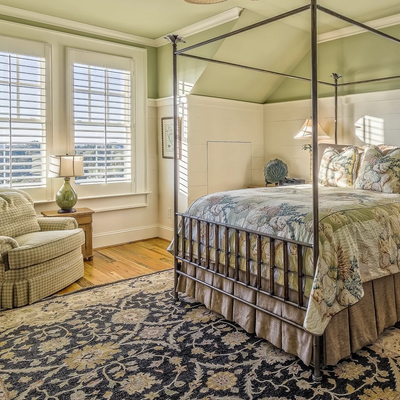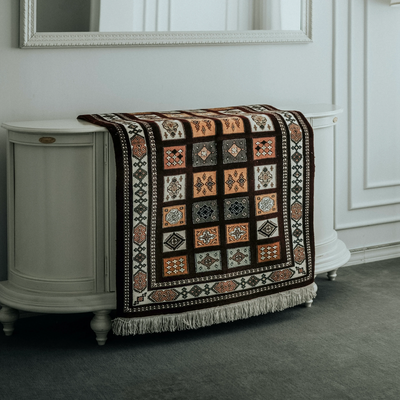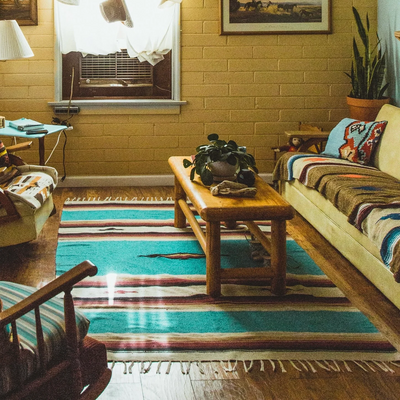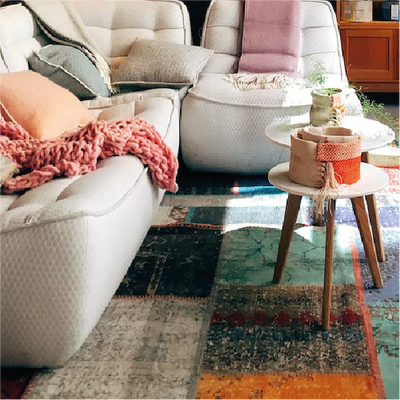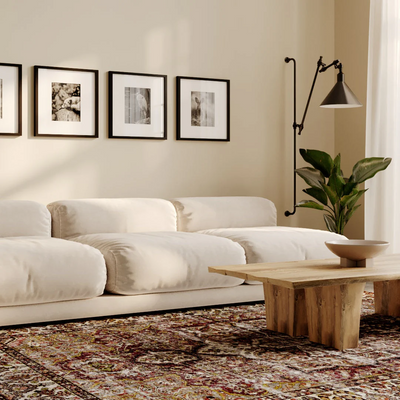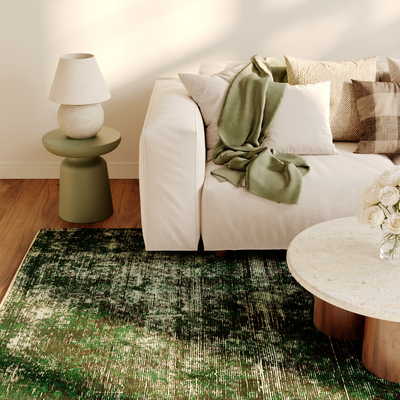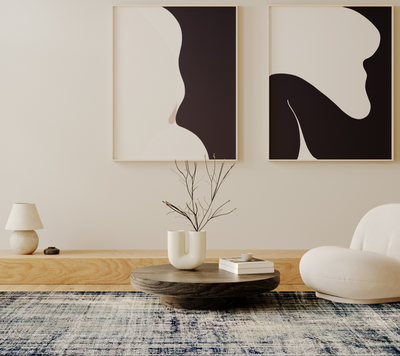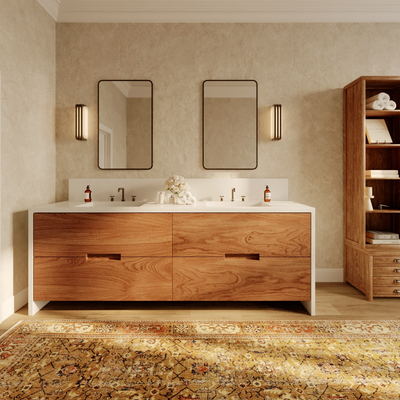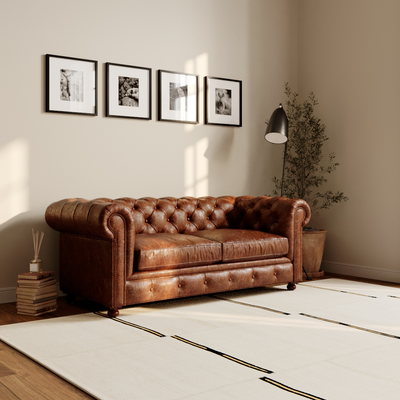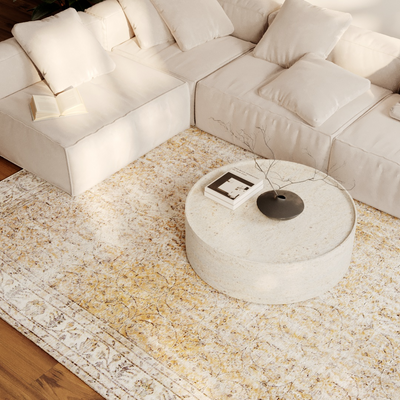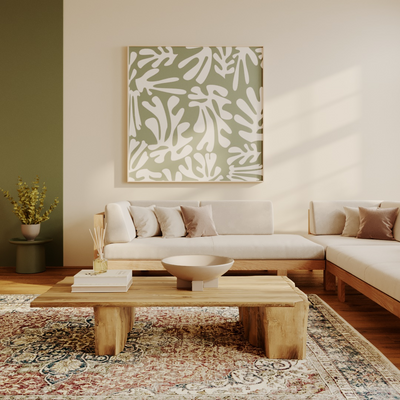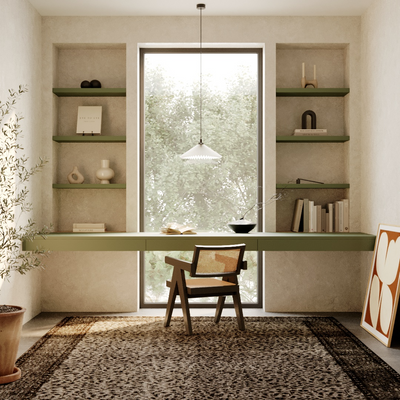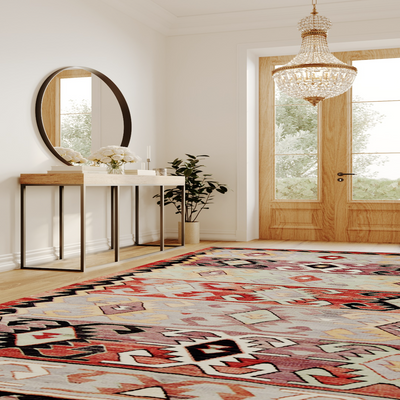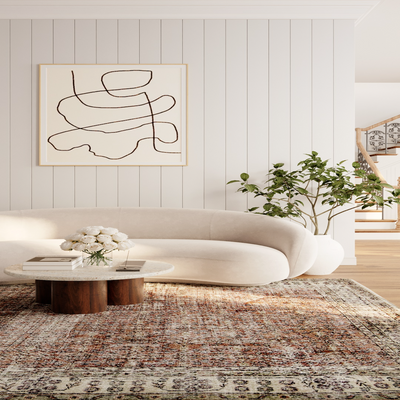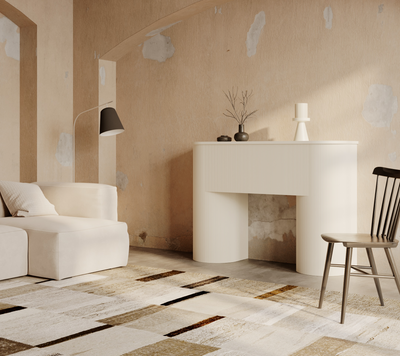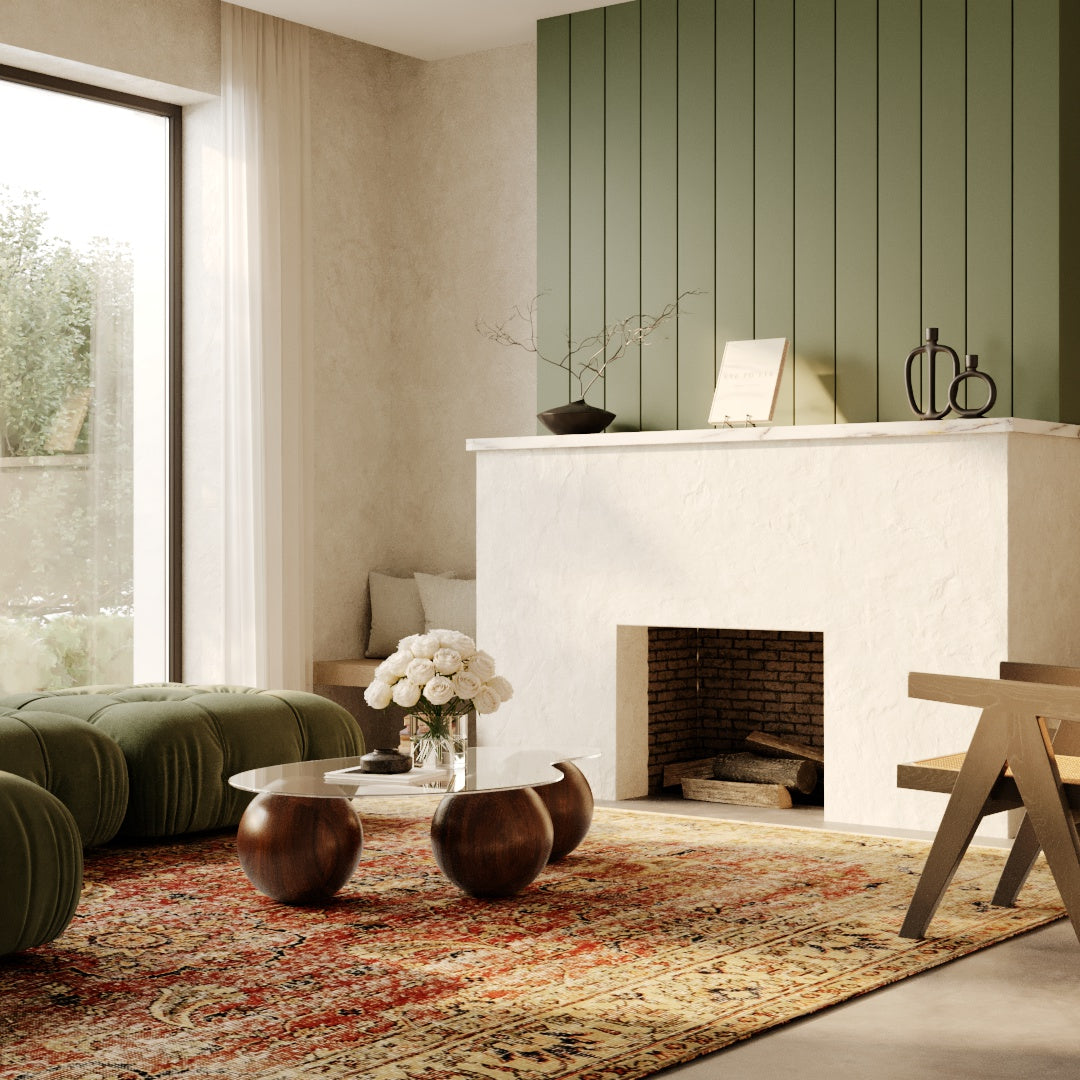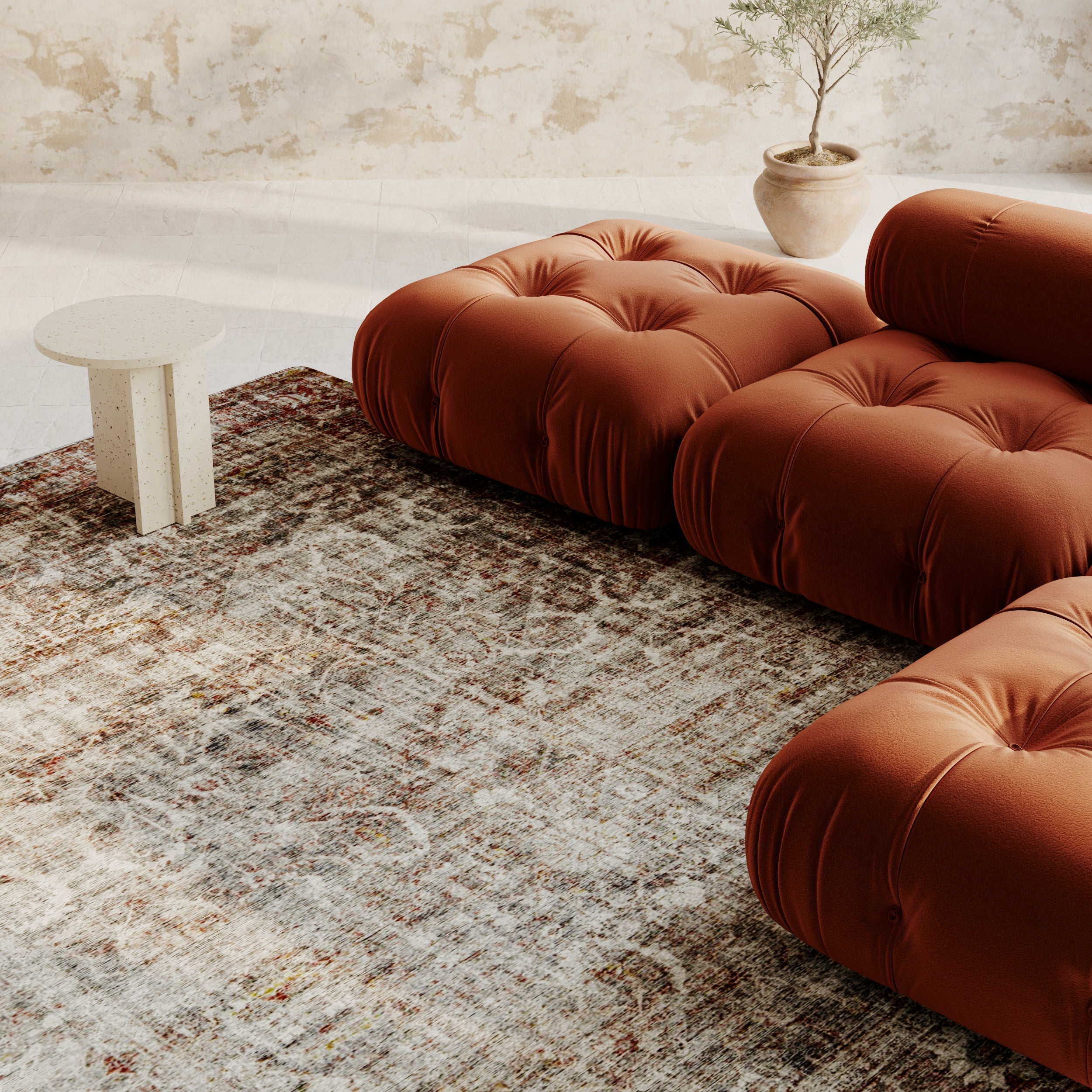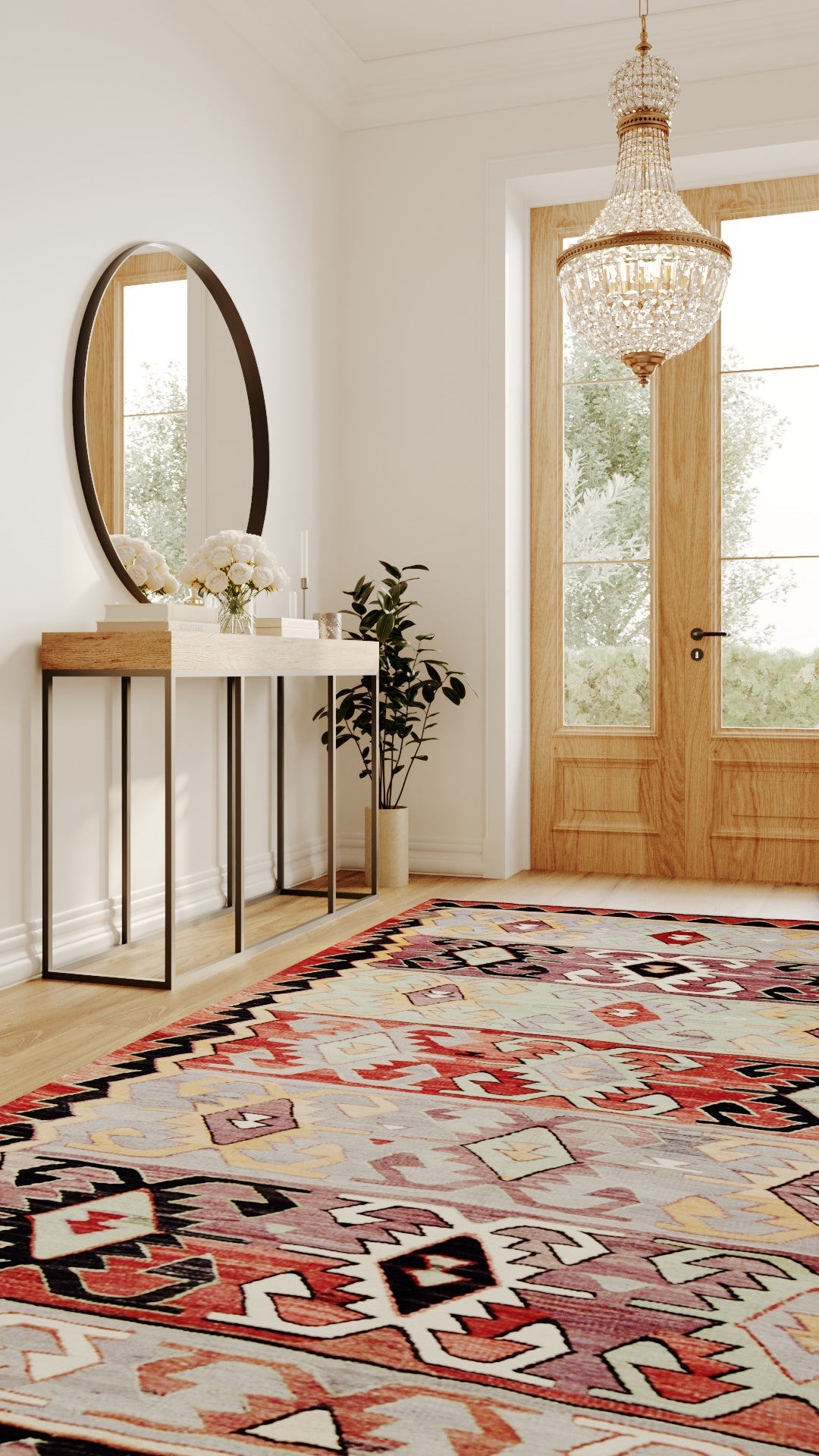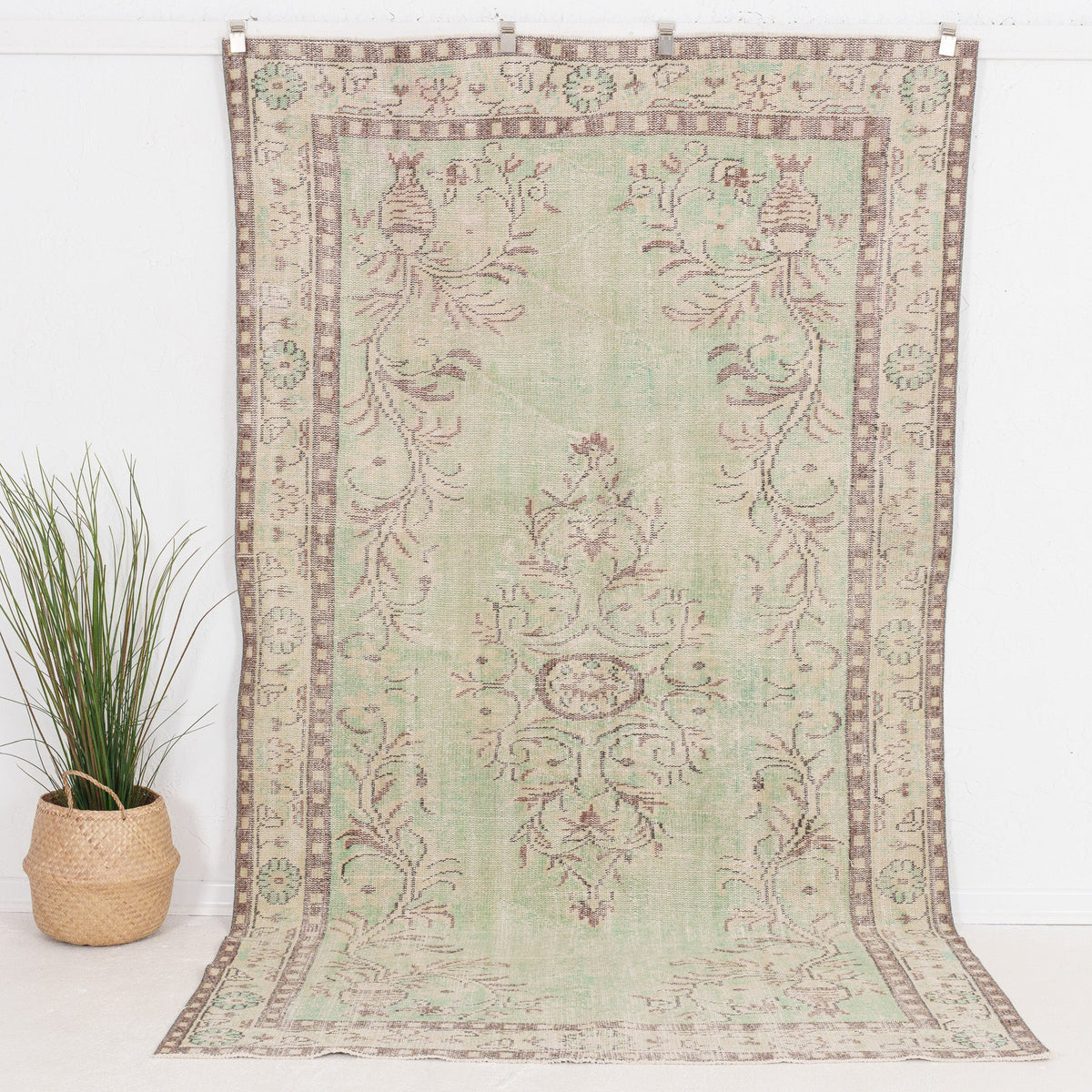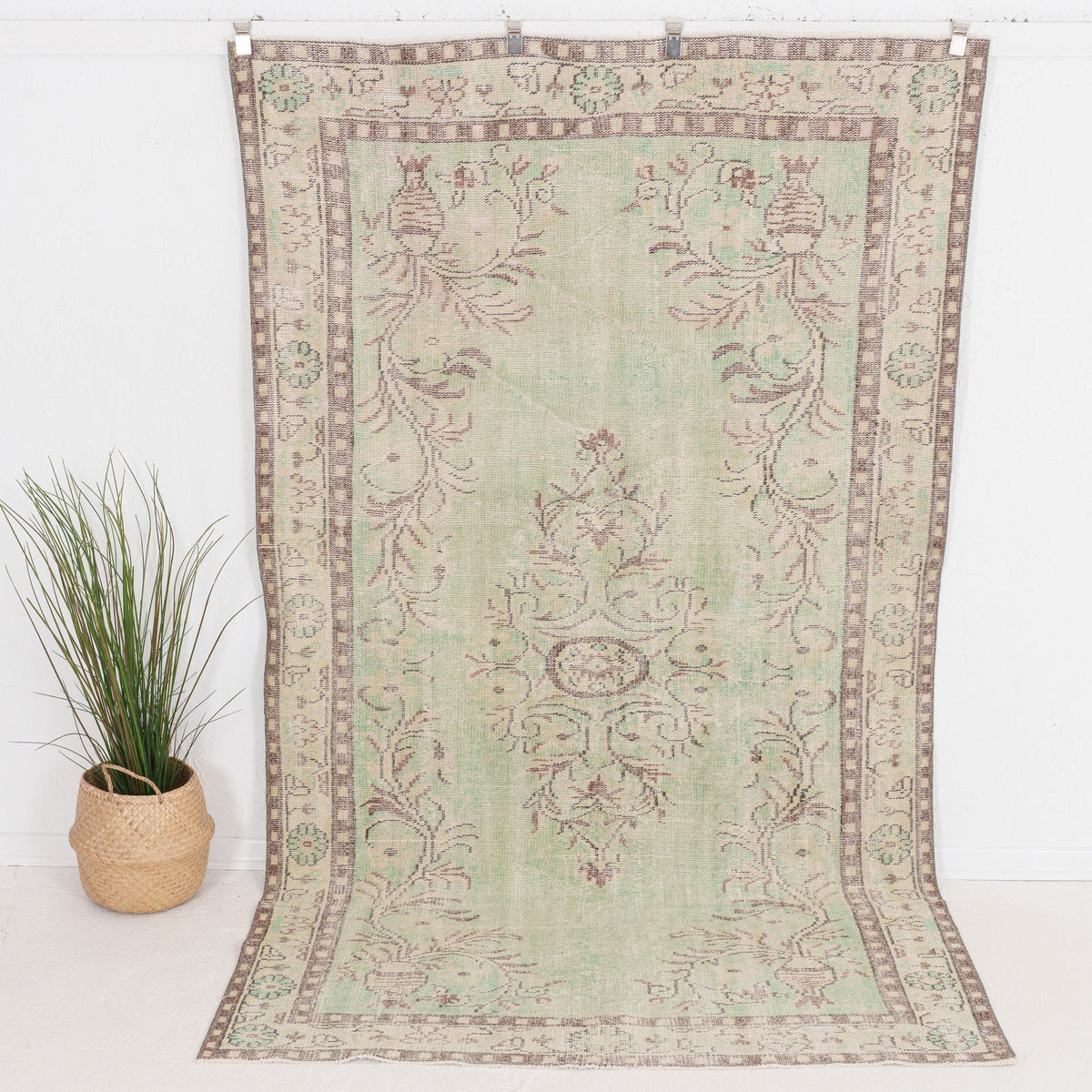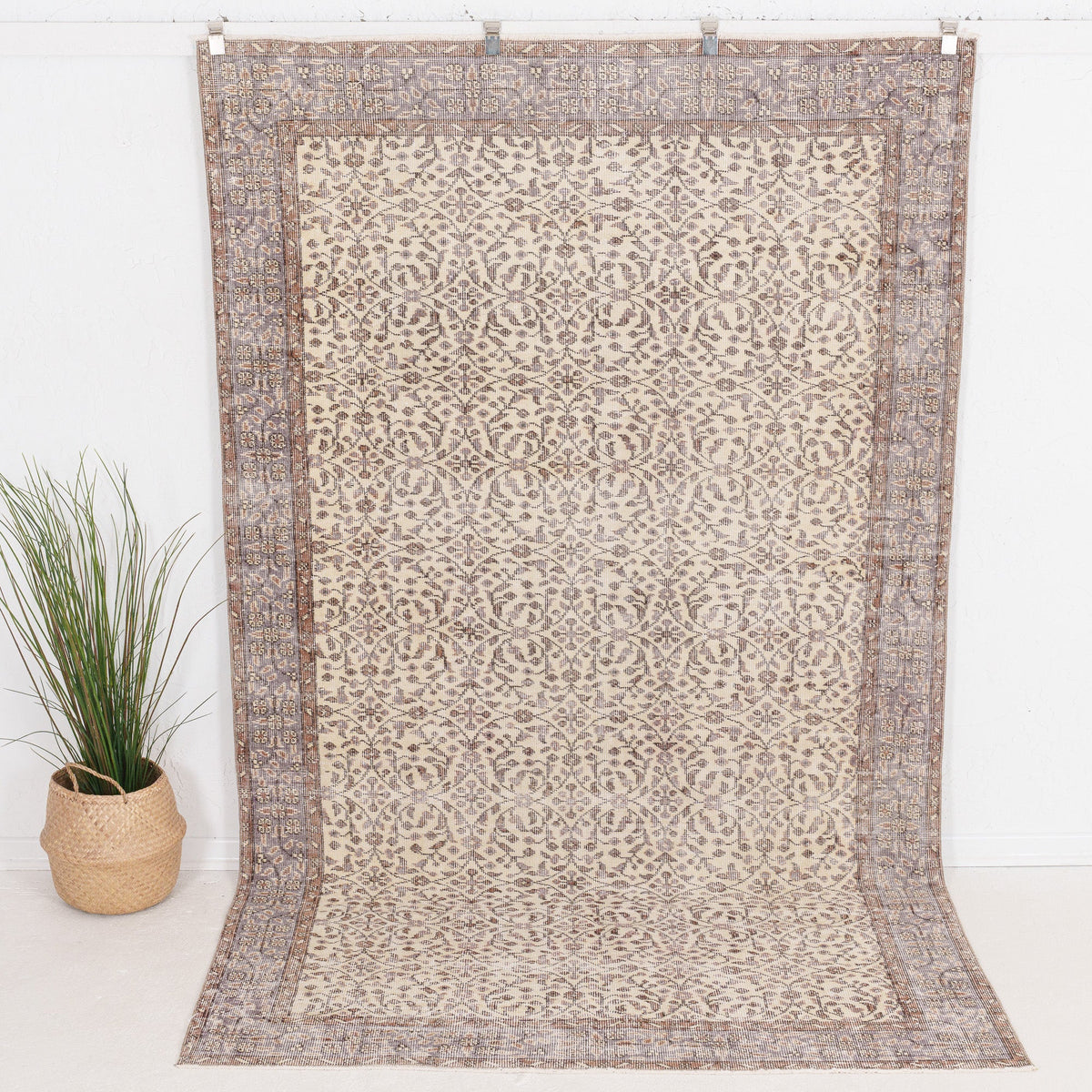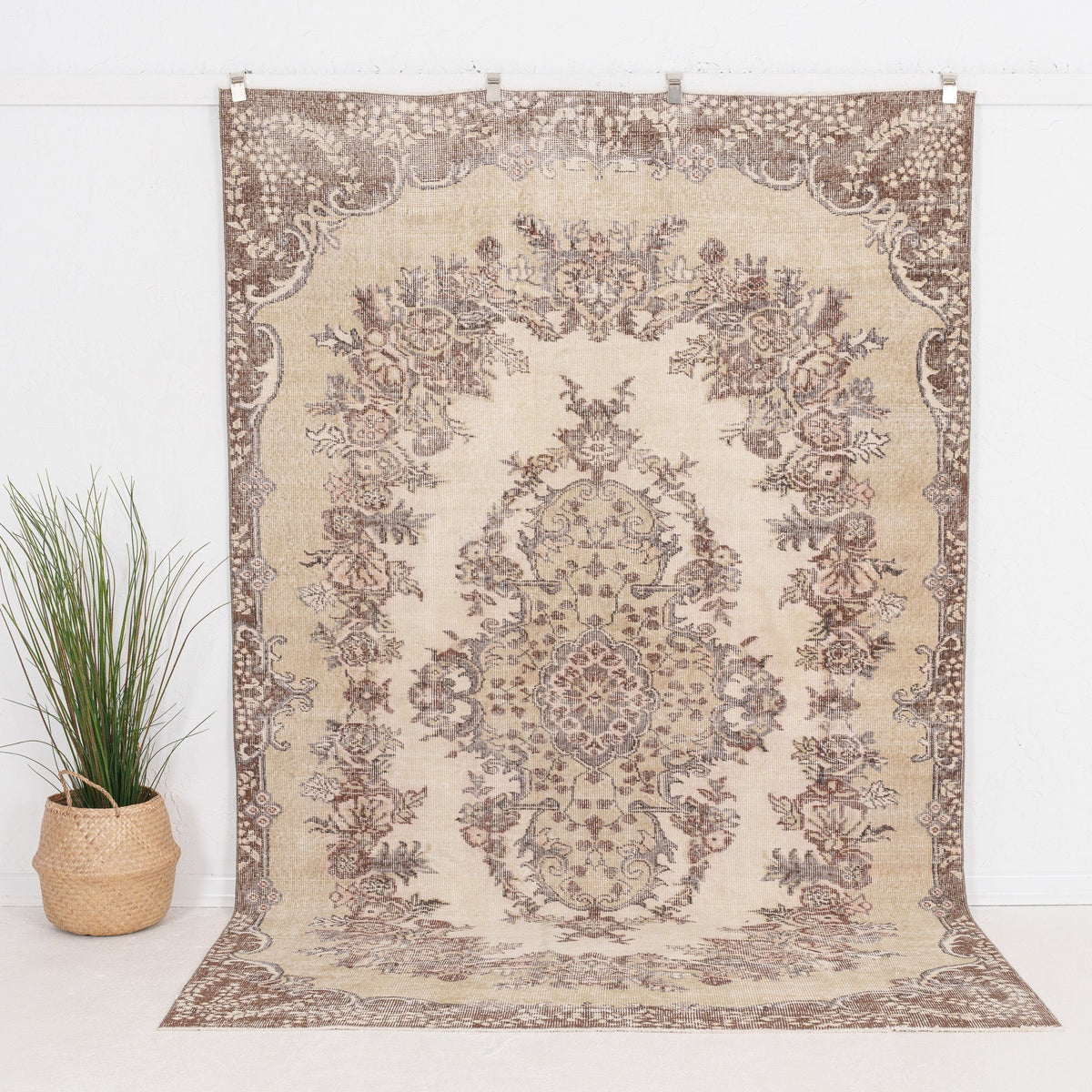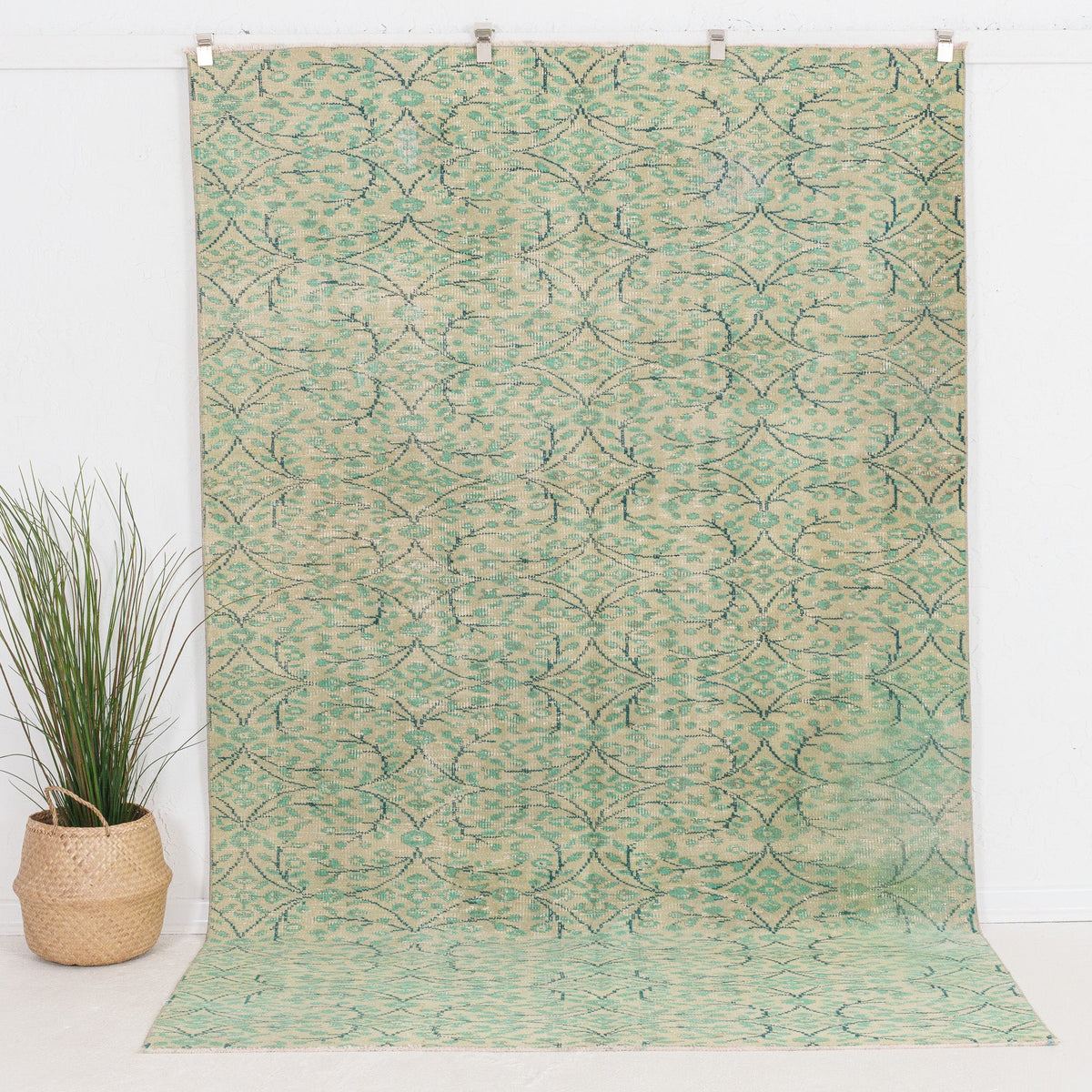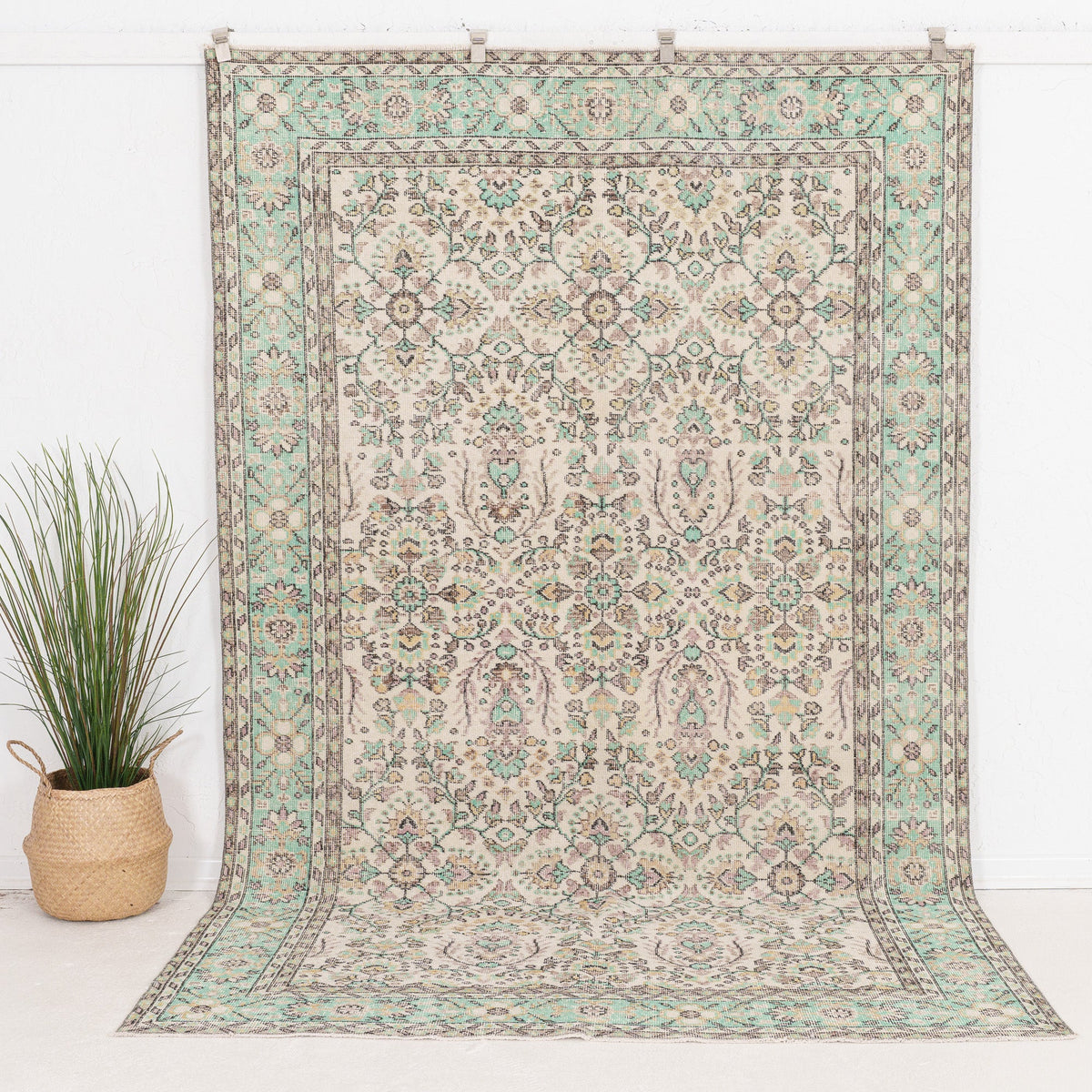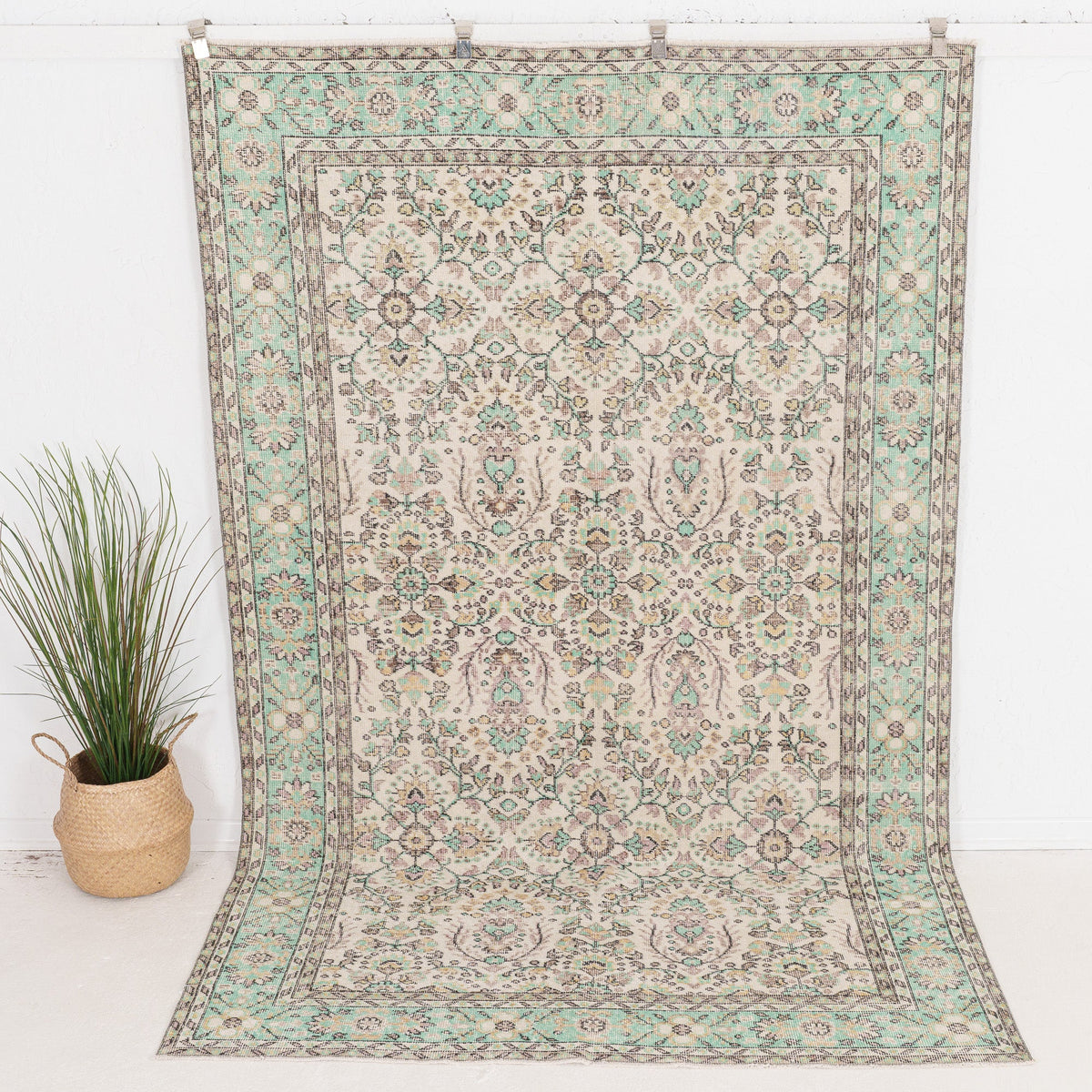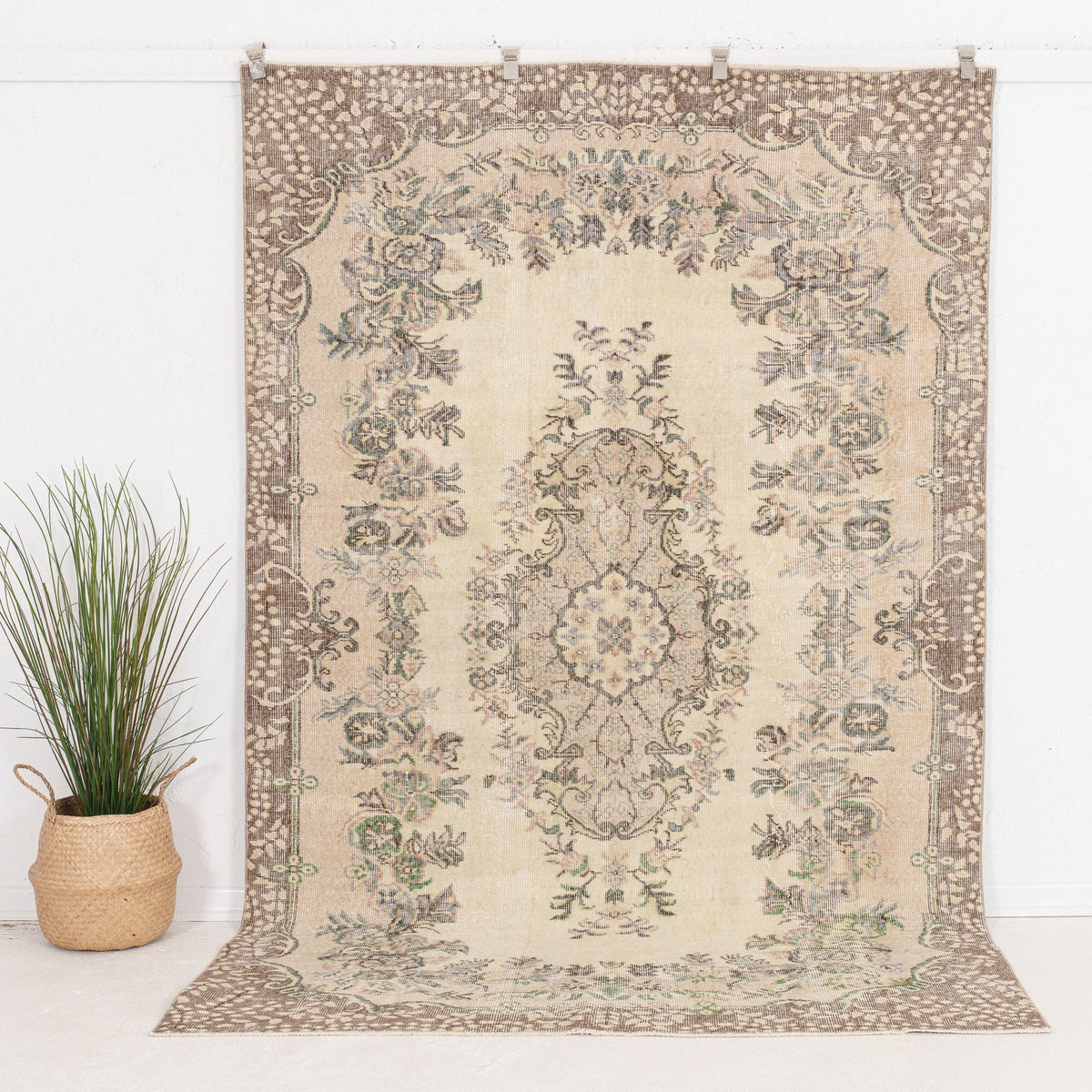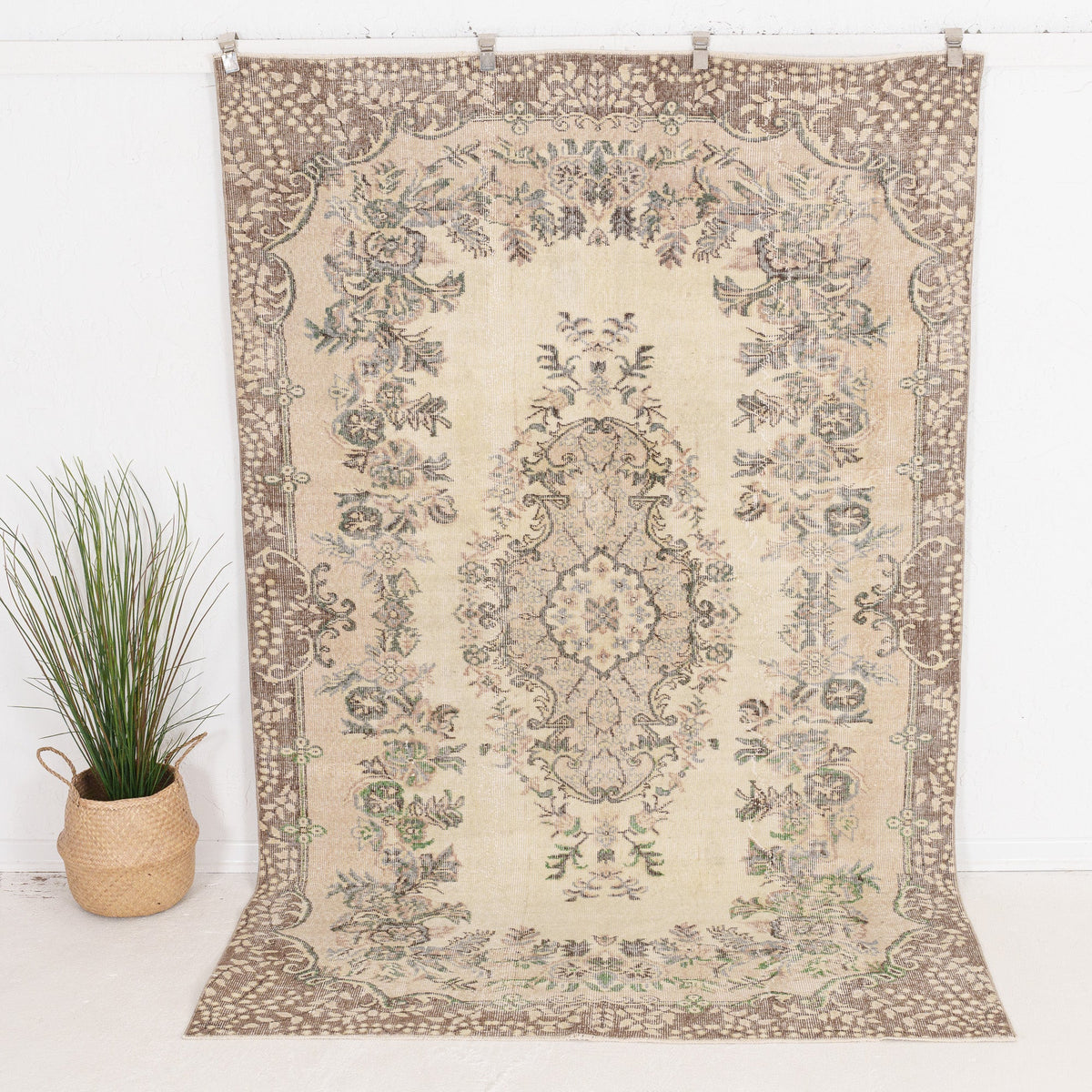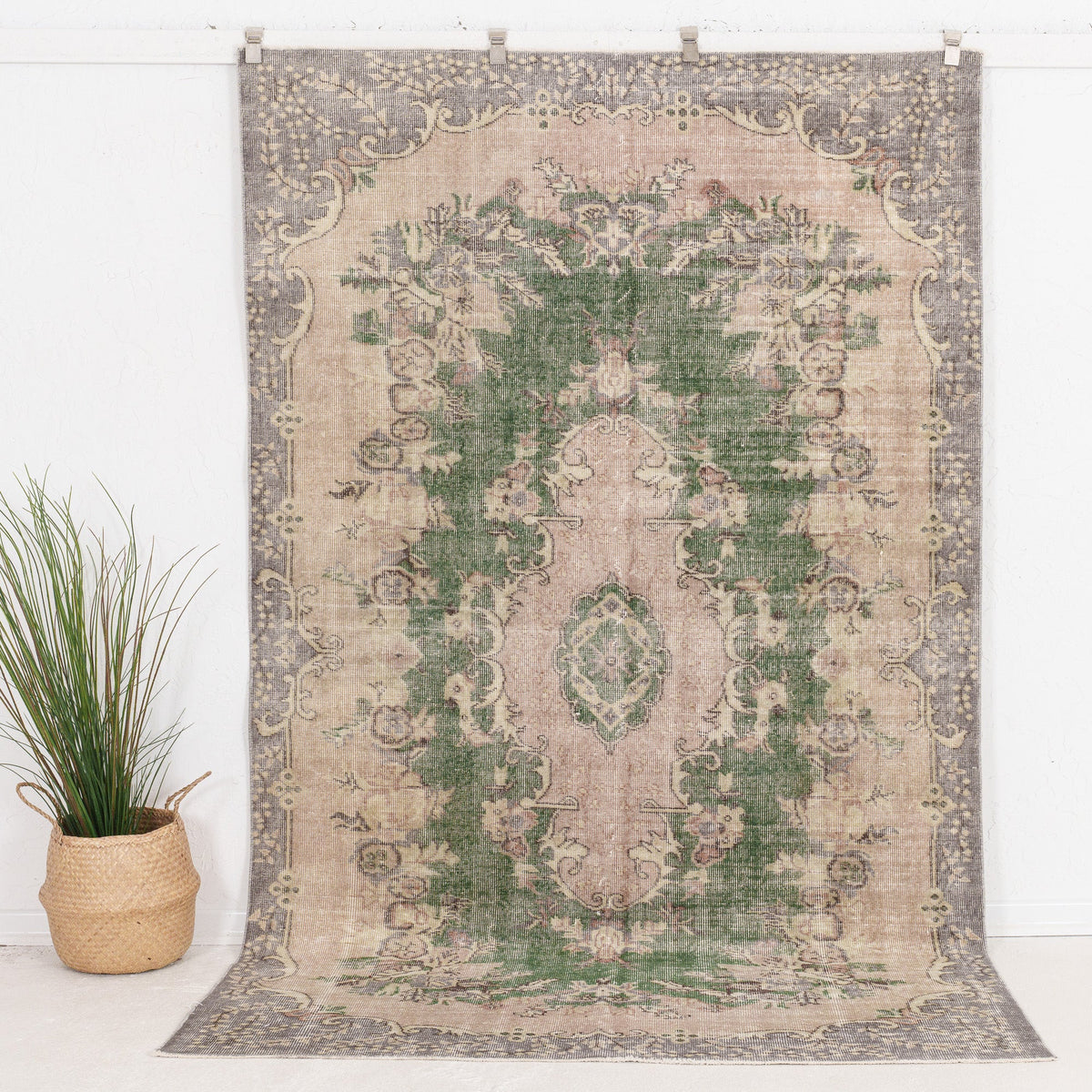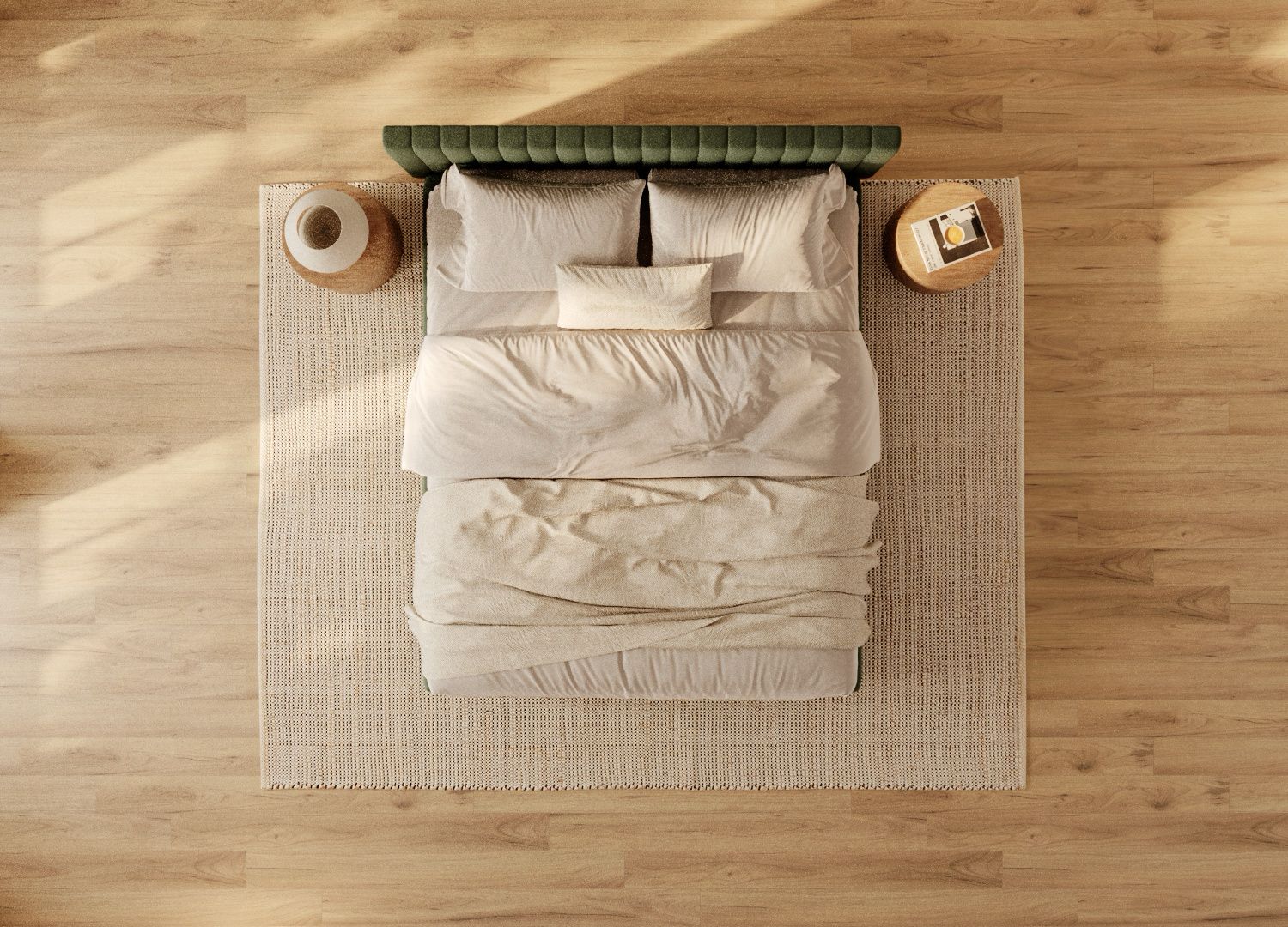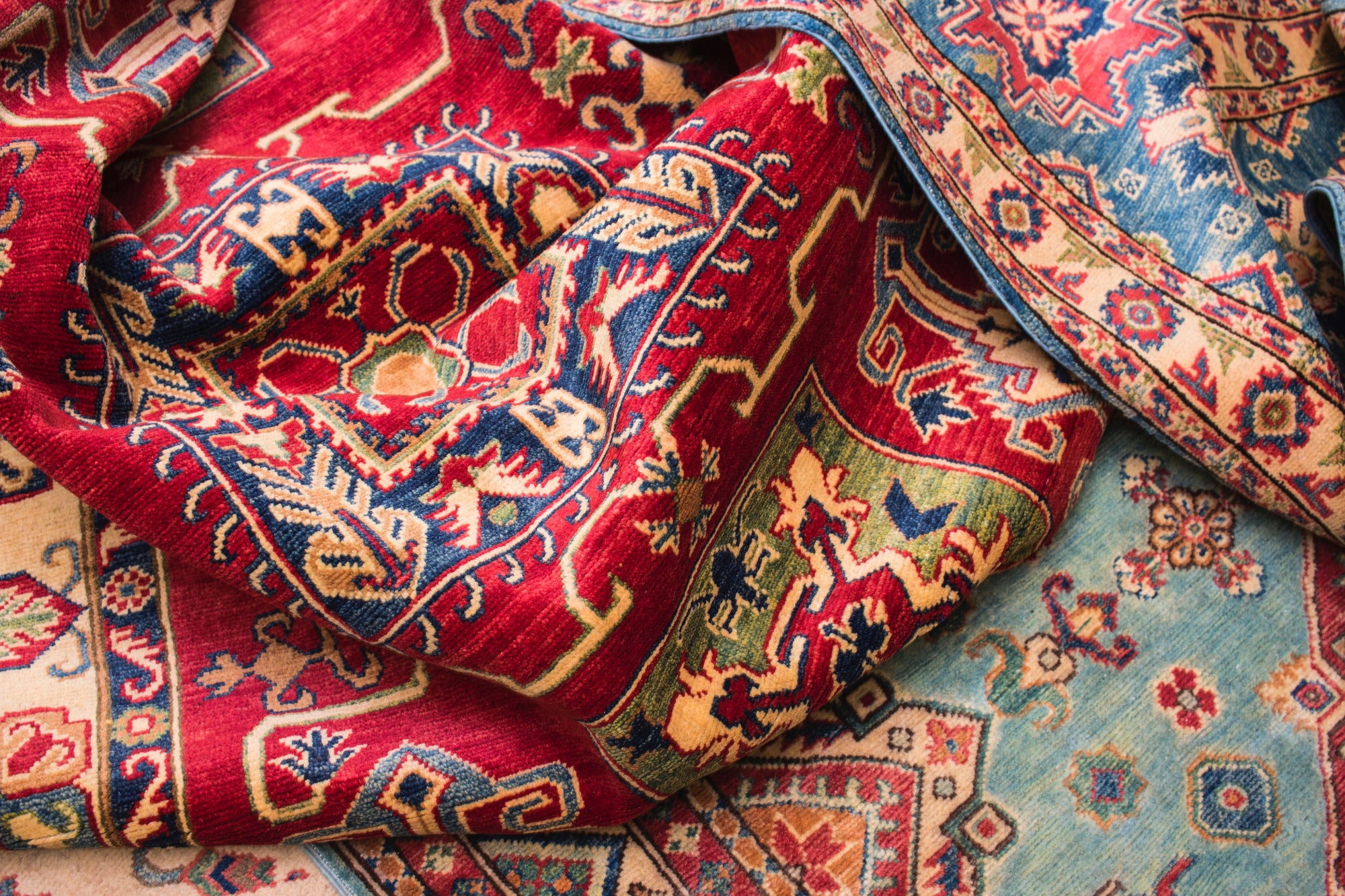A rug is much more than an accessory. It can draw eyes and set the tone for your entire room. Rugs can also play supporting roles, like accentuating existing elements and providing a harmonious backdrop. The beauty of rugs goes beyond their texture and color. They can unite, extend, or separate different areas within a space.
Your rug choice is a reflection of your design objective, shaping the way a room functions and feels. Whether you're a fan of vibrant and eclectic styles or prefer a more subdued and formal ambiance, the right rug can transform your space.
This guide is your pass to the common rug sizes and design aesthetics. There's no one-size-fits-all approach. We'll explore how you can use rugs of various sizes to complement furniture layouts. Hopefully, by the end, you'll have a much better idea of how to create spaces that are both visually captivating and purposeful.
Standard Rug Sizes You Can Find
Interior design is a deeply personal endeavor, and your unique taste, preferences, and the specific needs of your space guide your choices. Here is a list of the most common rug sizes to help achieve your goals:
Smaller Rugs: 4x6 and Smaller
When it comes to common area rug sizes, smaller rugs like 4x6 and 3x5 rugs open up possibilities for enhancement. If you’re wondering how big is a 3x5 rug, you can easily place these rugs in the kitchen, the entryway, the bathroom, or the nooks and landings of your home.
These smaller rugs have a remarkable ability to transform unnoticed spaces. These are ideal common rug sizes for dining rooms as well.
In the kitchen, a 4x6 rug adds a touch of comfort and warmth underfoot. It can define the cooking or dining area. The first impression of your home, the entryway benefits from a small rug to create a sense of arrival.
Bathrooms, often neglected in terms of decor, can instantly feel cozier and more styled with a small rug. The in-between underrated spaces come alive with the addition of a well-placed rug. It brings a sense of wholeness to these transitional areas.
In these smaller spaces, it’s easy to overlook the impact a rug can have. So, how big is a 4x6 rug? These smaller-sized rugs are ideal for creating an inviting atmosphere in the often-neglected corners of your home.
Medium Rugs: 5X7, 5X8 and 6X9
With a desire for more versatile design options, medium-sized rugs have become popular choices for homeowners. These typical rug sizes offer flexibility, making them a favorite among designers.
So, how big is a 5x7 rug? They can work in various settings, from primary rooms like living spaces and entryways to medium bedrooms and offices.
They're popular because of the abundance of options like patterns, designs, and materials. In many instances, you can use 5x8 and 6x9 rugs interchangeably. It allows you the freedom to experiment with various layouts and arrangements.
One interesting aspect is the way these rug sizes challenge traditional norms. 6x9 and 5x8 rug sizes are less commonly used in standard dining arrangements. But, the evolving landscape of apartment living has revolutionized how we interact with our space.
The adaptability of 5x8 and 6x9 rugs allows for a seamless integration of design and functionality. These features make them go-to choices for those seeking an efficient use of space. So, if you're reimagining your apartment layout or exploring new possibilities, these rug sizes offer creative and space-conscious design solutions.

Large Rugs: 8X10, 9X12 and Larger
So, what about larger rugs, how big is an 8x10 rug? The grandeur of 8x10, 9x12, and larger rugs introduces a sense of luxury and scale to any room. These sizes share similar setups that are standard in interior design. They can create a classic and timeless look.
Larger rugs accomplish several design goals. They bring cohesion to the surrounding furniture and delineate the designated space from the rest of the room.

The beauty of these common large-area rug sizes lies in their versatility. They can adapt to various design aesthetics and accommodate different furniture layouts. The key principle behind this standard setup is the creation of a well-defined area within a larger space.
You can achieve a sense of unity and purpose in the selected zone, just by bringing furniture together on a rug. It enhances the visual appeal of the room and offers a comfortable and cohesive foundation for your interior.
Whether you're furnishing a spacious living room, a formal dining area, or a grand bedroom, the elegance of larger rugs offers endless possibilities for creating a sophisticated atmosphere in your home.
Check out all the common rug sizes here.
Rounds and Runners
Round rugs offer a visually appealing alternative to the traditional rectangular or square options. Their circular shape mimics the geometric patterns of round tables. It brings a dynamic and engaging quality to a room.
In a traditional living room setup, round rugs help break away from the conventional linear design. Placing a round rug beneath a coffee table or in a seating nook can create a sense of cohesion and balance.
While runners are typically associated with hallways or narrow spaces. Their elongated shape complements the flow of the area. However, the versatility of runners extends beyond conventional placements, allowing for creative and unexpected uses.
In hallways, runners serve practical and aesthetic purposes, providing a soft surface underfoot while adding visual interest to an often-overlooked space.
Consider using runners in entryways, alongside kitchen islands, or even as a pathway through larger rooms.

Both shapes offer a wealth of design possibilities. Embrace their versatility, experiment with placements, and let rounds and runners become expressions of your unique style and creativity.
How to Choose the Right Rug Size for Your Room?
Choosing the right size for a common rug is crucial to enhancing the aesthetics and functionality of your space. Here's a guide on how to select the ideal rug size for your room:
Measure the Space
Measure the length and width of the area you intend to place the rug. Use a tape measure to determine precise dimensions. Ensure that the rug size complements the proportion of the room and leaves enough space around the edges.
Consider Furniture Placement
Consider the placement of your furniture in the room. The rug should not cover essential features like a fireplace or built-in shelving. In a living room, a rug can be placed under the front legs of sofas and chairs or extended further to include the entire seating area.
Proportional Size
Choose a rug size that is proportional to the room. A small rug in a large room may appear out of place. Conversely, a large rug in a small room can be overwhelming.
Visualize with Tape or Newspaper
Before purchasing a rug, use tape or newspaper to outline different rug sizes on the floor. This visual aid lets you see how each size fits within the room.
Experiment with various placements to find the best functional option.
Size, style, and sophistication converge to define the essence of a perfect rug, and for over 30 years, we've curated one of the world's most extensive collections of antique, vintage, and modern rugs. At Kudenrugs, we take pride in offering you only the finest products.
Our commitment to quality certifies that every rug you bring home reflects the unparalleled standards we maintain.
Explore our collection and experience the seamless blend of passion, tradition, and affordability that sets us apart!

